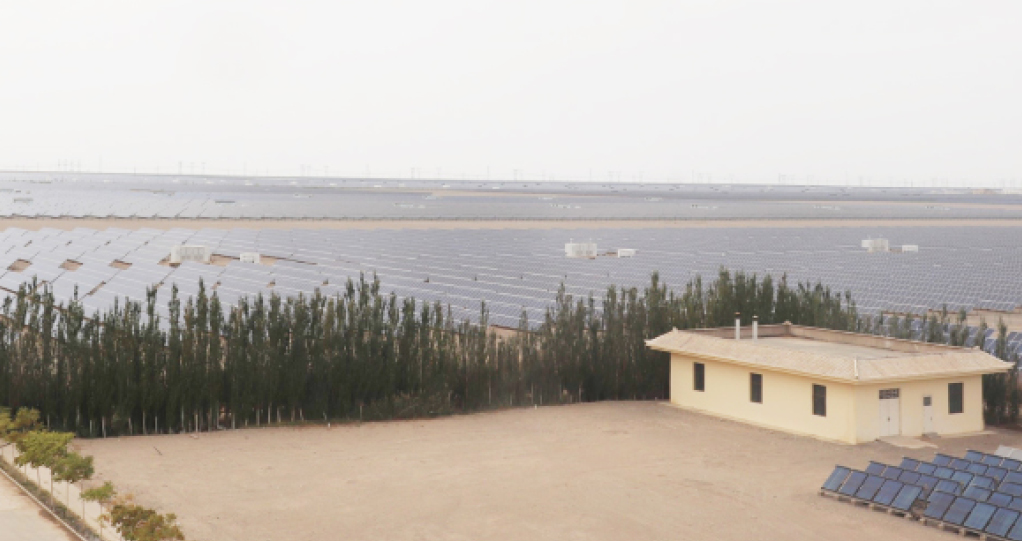Dunhuang, a town in Jiuquan, Gansu Province, Northwest of China, is located in the arid desert belt of the country. But the location is also the source of its wealth with its ancient sites, mountains, sand dunes, renewable energy, night market and theatre. These unique features and events help sustain its economy.
Tourists and visitors are pleasantly surprised by the wonderful sites in Dunhuang which were established from the historical role of the town, which drives its economy and social life.
In 2021, according to the China Premium Database’s National Accounts, Dunhuang, which has 181,800 inhabitants, has a gross domestic product of ¥9 billion, which is about N46.3 billion while the per capita income was 45,525.260 RMB, which is about N35 million.
Much of the prosperity of Dunhuang is linked to its unique geography and efficient use of the same for the benefit of its people. The wonderful ancient Buddhist cave sites like the Mogao Caves, the Dunhuang manuscripts, the sand dunes of the Mingsha Mountain Crescent Spring, and the town’s modern digital theatre and the conference centre.
During a seminar for Young Media Professionals from Developing Countries in September by the China Centre for International Communication (CICG), journalists had the opportunity to visit these wonderful sites alongside other tourists from within and outside China.
Participants were selected from Africa, Middle East and the Caribbeans.
Tourists and visitors also throng to popular historical sites like the Dunhuang Museum, Yangguan Ancient Sites, Dunhuang Yardang National Geopark, Yumen Pass, the Great Wall of the Hand Dynasty, Hecangcheng Relic Site and the Dunhuang Night Market.
The Dunhuang Museum contains more than 10,000 items, including the vivid replications of the murals and sculptures in Mogao Grottoes; the Yangguan Ancient Sites, which was constructed during the Western Han Dynasty Wudi Period and was an important gateway of the South Silk Road; and the Dunhuang Yardang National Geopark, which is a UNESCO Heritage Site, comprises geological features created over time by the soft part of the earth’s surface being eroded by wind and rain, with the hard part of the rocks remaining in the desert.
Other sites of interest include the Yumen Pass, an important fort in the ancient Silk Road, which functioned during the early Han Dynasty of 202 BC to 220 AD; Great Wall of the Han Dynasty, which is close to the Yumen Pass and has relics of the wall built with bricks and sacks running to Xi’an, Shaanxi Province, another arm to Hebei Province, and some traces to Beijing.
The visit to the Mingsha Mountain Crescent Spring was particularly exciting because of the volume of visitors who troop there every day, which tour guides put at around 30,000 per day either riding on camels or sliding down its steep slopes.
Within the precincts of the mountain, the east of the Mingsha lies Sanwei Mountain, while Heishi Peak is located to the south, and the Gobi and Kumtag deserts stretch to the west with a moon-like crystal clear spring nestled within the sand dunes of the mountains.
Another location of interest was the Dunhuang Night Market, which bubbles through the night. Shoppers, who visit the market, also relish the melodious tunes from live bands in the market and the spicy aroma from the numerous restaurants.

Responding to inquiries, Ming Fang, a cheerful herbal tea seller, said the market always bubbles day and night and mostly during the night till the next morning and is a favourite.
“Night crawlers start coming to the market from 7pm till the next morning. It is a vibrant market and you can see the live bands, children gaming, busy restaurants and bars,” she enthused.
In one of the shops, a couple, who work in Beijing but were vacationing in Dunhuang, said they arrived through a speed boat from Gansu’s capital, Lanzhou City, explaining that their experience at the night market has been awesome.
Generating energy from sun
However, it is the solar photovoltaic and photothermal power station, the Dunhunag Optoelectric Industrial Park, the town’s ability to utilize its abundant sun (which reaches 40 degrees celcius during the summer) to generate electricity, that demonstrates China’s commitment to renewable energy and carbon neutrality.
The thousands of giant panels installed at the 250 square kilometres industrial station by the 36 energy companies operating in the park yields a total of 1.9 billion kilowatt hours of electricity, and it is being expanded to transmit power to parts of Hunan, and the lines are being extended to Shanghai.
During the wet seasons, when the sun drops and the photovoltaic station can only absorb lower amounts of sun radiation, the photothermal station stores sufficient energy in the molten salt tank to contribute to Gansu Province’s energy mix and as a major net contributor to the national energy generation.
Dunhuang’s credentials as a popular conference and events centre came to the fore as experts assembled in the massive conference centre for the 13th China Digital Publishing Expo, where the Chinese progress in digitisation of media was highlighted as participants reeled out the details of the transition.
The event was opened by the Secretary of the Communist Party of China’s Committee on Foreign Languages Teaching and Research Press, Wang Fang, who went on to highlight the country’s commitment to advancement in AI-assisted publishing and data analysis.
Chief executives in the new media and digital technology industry such as Xiao Hong of the Perfect World Co., Ltd; Lindsey Dixon of Global Journal Publishing and De Gruyter; Prof Pronkina Olga of the Gansu University; Yuan Zhijun of Baidu Digital Reading Department; He Kui of the SDX Joint Publishing Company; Nie Xiaolin of FlyTech; Xu Bin of Shanghai Qimao Culture Media Ltd; Zhang Yuanlin of Dunhuang Academy; and Shi Qiming of Digital Communication Group, all gave detailed speeches on new media innovations in their organisations.
Night of theatrical excellence in Dunhuang
It was an emotional night at the Le Dong Dunhuang, with a large-scale drama performance by a group of physically challenged artists on stage at the town’s 3D theatre.
The visual spectacle displayed on the about 80x80m stage with the energy, colour and vivacity of the artists evoked Chinese chivalry.
The acrobatic dancers’ combination of chemistry in their choreography, which was enhanced by the colour, smoke and petals spread across the stage, held the audience spell-bound.
One left the venue with a mixed feeling of exhilaration and emotions; a stronger feeling after learning the artists were mostly from the school for persons with vision, speech and auditory impairment.
That feeling became more overwhelming with the thoughts of what might have been if Nigeria earnestly harnessed the resources in its diverse topography to build oasis of opportunities and prosperity for its over 215 million citizens. Dunhuang and China have shown that it is possible.

 Join Daily Trust WhatsApp Community For Quick Access To News and Happenings Around You.
Join Daily Trust WhatsApp Community For Quick Access To News and Happenings Around You.


